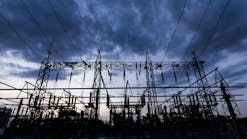Standardizing Conservation Voltage Reduction Verification – Paving the Way to Ensure Efficiency
The electric power grid is undergoing an unprecedented transformation into a more efficient, reliable, resilient, and clean infrastructure. This transformation is primarily supported by more comprehensive grid monitoring and control, enabled by advanced metering infrastructure, distribution automation, and phasor measurement units, among other sensing and measurement technologies. This enhanced monitoring and control facilitates multiple viable practices, most notably conservation voltage reduction (CVR) and volt-var optimization (VVO).
CVR, which has gained renewed interest in recent years, is a cost‐effective way to deliver energy efficiency benefits to customers. The fundamental principle in CVR is that the distribution voltage can be maintained at the lower half of its acceptable range (114–120 Volts based on ANSI standard), without causing any harm to customer appliances. Customer devices commonly draw less energy at lower voltages resulting in energy savings. This will provide a unique opportunity to reduce energy and peak demand by intelligently regulating distribution voltage without active customer participation. This article will look at the benefits and challenges of CVR and highlights the need to develop a common practice in measurement and verification (M&V) of this fast-growing practice.
The Benefits
The first and foremost benefit of deploying CVR is the acquired savings. The US DOE reports savings from 1 to 4 percent based on the prior implementation of CVR programs[1]. Once the voltage is lowered, the energy consumption of many customer devices will be reduced, resulting in energy savings and potential peak reduction. This voltage reduction will not adversely affect customer appliances, as the voltage will still be greater than its lower bound based on the ANSI standard. The other significant benefit of CVR is its applicability to the entire service territory. Other energy/power reduction-focused programs, such as energy efficiency and demand response, need to attract and enroll customers to alter their power and energy.
However, this is not the case for CVR. Electric utilities can roll out CVR programs for all customers without needing to enroll them. Moreover, customers will not notice the voltage changes made in the system. Also, electric utilities can deploy CVR programs without costly upgrades and investments to their existing network. Distribution and sub-transmission systems are equipped with voltage regulation devices that can fully control the voltage and enable CVR. Even if upgrades are needed, the investments are likely to be only small portion of the savings offered by CVR[2]
The Challenge
The most significant challenge in CVR application is the M&V of its effects. Once CVR is applied, there is no benchmark load consumption measurement, which, complicates observing the CVR's real impact. This issue is complicated by the difficulty of distinguishing changes in load and energy consumption that are caused by changes in temperature and customer usage patterns over time and activity of regulating devices with and without CVR. To quantify CVR effects, it is common to use a CVR factor, which is an indicator of the relationship between energy savings and changes in voltage from CVR operations, i.e.,
CVR factor = (Percentage of change in energy consumption)/(Percentage of change in voltage)
Electric utilities collect a substantial amount of load and voltage data over an extended period of CVR on/off time for each CVR-enabled circuit to estimate this factor. The energy savings associated with the program depend heavily on the data quality, how data are treated (collection, cleaning, resolution, etc.), and what methodology is used for CVR factor calculation (comparison-based, regression-based, simulation-based, etc.). Even the smallest variations associated with data and methodology can result in vastly different CVR factors and energy savings. This sensitivity would further question the viability of the approach taken by an electric utility and the validity of the results.
FIGURE 1 GOES HERE
As an illustrative example, the figures below compare the results of three different CVR assessment methodologies, namely comparison-based, regression-based, and constant CVR, on three CVR deployed feeders. These feeders are connected to the same transformer. As clearly shown, entirely different results for CVR factors and energy savings are produced by these three different methodologies.
Need for an Industry-Accepted Standard
The sensitivity of the CVR factor calculation to data and the choice of methodology has resulted in a considerable inconsistency among CVR factor and energy saving calculations by various electric utilities. A recent study by ComEd, benchmarking CVR efforts by 26 major utilities in the US, shows this great divide[3]. There have been efforts to bridge the gap and ensure alignment on CVR M&V processes. A recent example is the IEEE P1885 Draft Guide for Assessing, Measuring, and Verifying Volt-Var Control Optimization on Distribution Systems[4]. This guide seeks to provide practical methods to estimate and verify the potential energy savings, demand reduction, and loss reduction achieved with distribution system CVR/VVO methods.
However, what has been prominently lacking is an industry-accepted standard that can be used by various electric utilities to quantify the CVR effects and validate their efforts based on data availability or adequacy scenarios. A standard can offer a multitude of benefits, including but not limited to:
- Providing a consistent approach for electric utilities to evaluate their CVR efforts. This consistency is particularly significant for utilities within the same state and under the jurisdiction of one public utility commission,
- Supporting utilities that plan to initiate new CVR programs and seek best practices to minimize their risk and ensure success,
- Offering a streamlined approach suitable for utilities to evaluate savings, and
- Provide insights on the expected CVR factor and energy savings for various feeders based on their characteristics, such as customer mix, feeder length and geographical location, voltage regulation devices, and other relevant factors.
Although a standard would be timely and useful for industry, comprehensive studies of CVR M&V components must be standardized to establish the best methods for adoption.
Call for Action and Participation
The Volt-Var Working Group (VVWG) of the IEEE Power and Energy Society is already investigating the need for this standard. IEEE is the world's largest technical society dedicated to the educational and technical advancements of electrical engineering and allied disciplines. Power and Energy Society is one of the largest IEEE technical societies and responsible for more than 45 percent of all published IEEE standards. The VVWG has recently approved the creation of the CVR Study Group to investigate the need for a standard. This study group is formed by electric utilities and is open to industry, academia, and national laboratories to join and support this effort.
Now is a pivotal time in ensuring that America's electric grid is operated as secure and efficient as possible while providing customers with affordable electricity. Such an effort will provide a leap forward in boosting energy efficiency and building the sustainable grid of the future.
Footnotes
[1] U.S. Department of Energy. Evaluation of Conservation Voltage Reduction (CVR) on a National Level. July 2010.
[2] R. Ardis, R. Uluski, “CVR Is Here to Stay,” T&D World, August 2015. Available [online:] https://www.tdworld.com/grid-innovations/smart-grid/article/20965787/cvr-is-here-to-stay
[3] Z. S. Hosseini et al., "Conservation Voltage Reduction and Volt-VAR Optimization: Measurement and Verification Benchmarking," in IEEE Access, vol. 8, pp. 50755-50770, 2020, doi: 10.1109/ACCESS.2020.2979242.
[4] https://standards.ieee.org/project/1885.html


